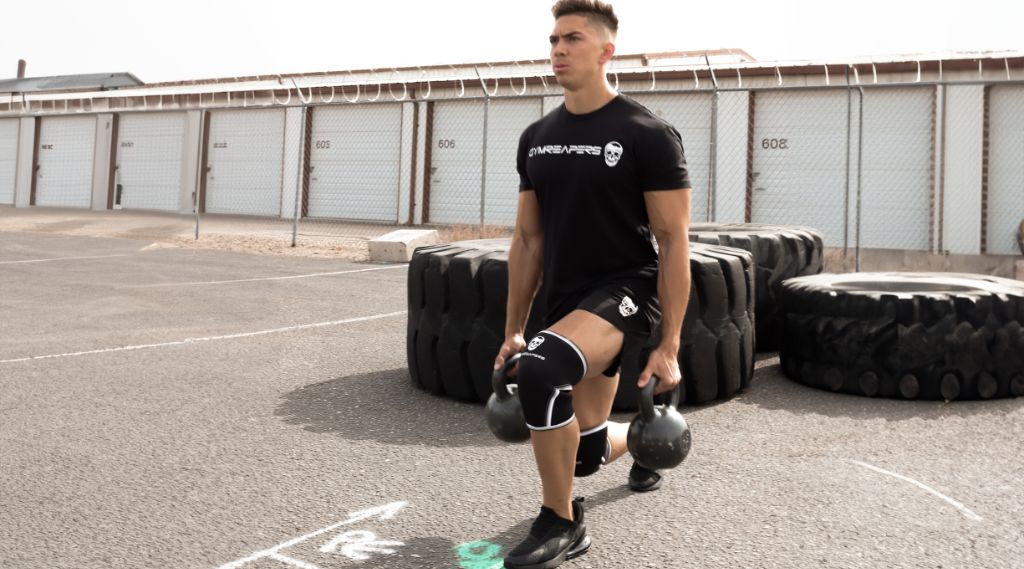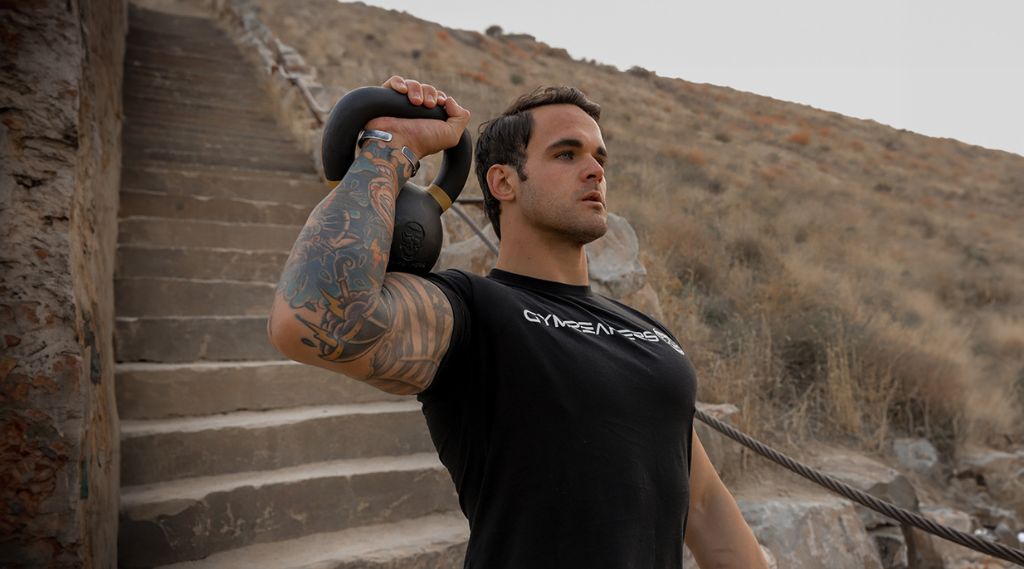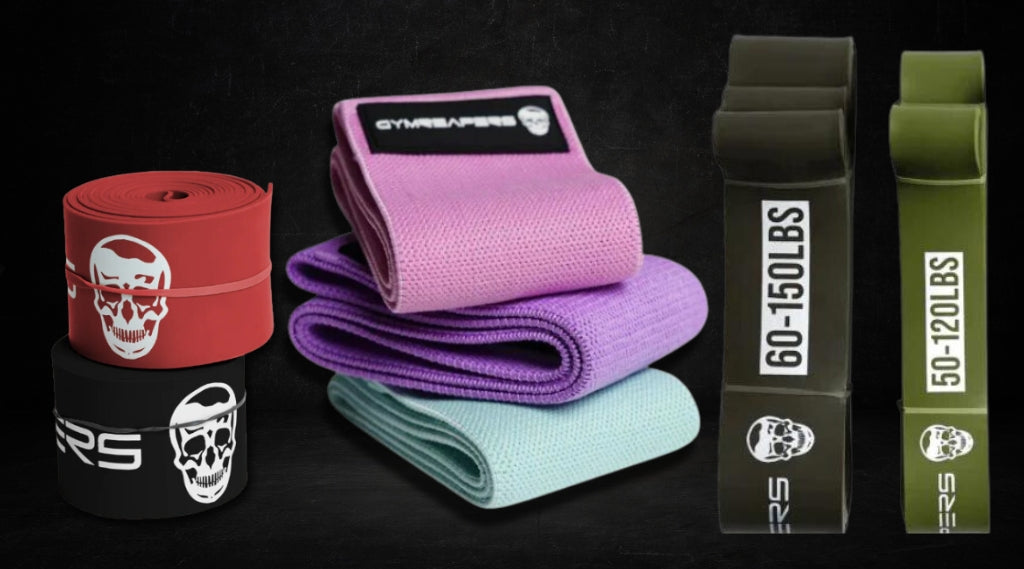How to Perform the Kettlebell Split Squat for Strength and Stability
Kettlebell split squats are great for building lower body strength, improving balance, and correcting muscle imbalances.
The kettlebell split squat is an effective exercise that builds up the quadriceps, glutes, and hamstrings. It works one leg at a time, allowing trainees to identify and address muscle imbalances. The movement’s potential for progression is excellent, as trainees can use increasingly more weight to challenge themselves.
While the split squat offers many benefits, trainees must know how to perform it and what mistakes to avoid to get the most out of each rep and keep injuries at bay.
Key Takeaways
Muscles Worked in Kettlebell Split Squats

The kettlebell split squat is an effective lower-body exercise. Here is a look at the muscles involved in the exercise and their functions:
Quadriceps
The quadriceps are a large muscle group that makes up the front portion of the things and consists of four heads: the rectus femoris, vastus lateralis, vastus medialis, and vastus intermedius.
Their primary function is knee extension (straightening of the knees), which makes them the primary movers during a kettlebell split squat.
Glutes
The gluteal muscle group consists of three muscles: gluteus maximus, medius, and minimus. Together, these muscles are involved in hip extension, thigh rotation, and abduction (moving the leg away from your body’s midline).
Given the greater stability demands of the split squat, the glutes contract isometrically (without changing position) to provide hip stability. Additionally, the gluteus maximus works alongside the quadriceps by driving the hips forward (hip extension), allowing trainees to get out of the bottom position.
Hamstrings
The hamstrings, which make up the back portion of the thighs, produce knee flexion (bending of the legs) and assist the glutes with hip extension.
During split squats, these muscles assist the glutes and quadriceps to promote knee and hip stability while producing some of the force needed to get out of the bottom position.
Core
The core, which includes the rectus abdominis (abs), transverse abdominis, obliques, and erector spinae, plays a crucial stabilizing role during split squats.
Given the stance and greater stability demands, these and other muscles must flex isometrically to promote torso rigidity, allowing trainees to maintain their balance throughout each set.
Benefits of Kettlebell Split Squats for Beginners and Advanced Lifters
The benefits of performing split squats with a kettlebell include:
Strengthens the Lower Body
The most apparent benefit of the split squat with a kettlebell is that the movement strengthens the entire lower body. This leads to better performance on other leg movements and during activities like running and jumping.
Builds Impressive Quads and Glutes
The split squat does a fantastic job of developing the quadriceps and glutes simultaneously. If you’re looking to build muscle in these two areas, then the kettlebell split squat should be a staple in your workout routine.
The quads and glutes work hard in the split squat because the movement requires you to lower yourself down into deep hip and knee flexion, so the quads (knee extensors) and glutes (hip extensors) must work harder to bring you back up to a standing position.
Reduces the Risk of Muscle Imbalances
Unlike bilateral exercises like the barbell back squat, where both legs work together, split squats are unilateral. This means one side of the body does most of the work on any given rep, allowing trainees to give equal attention to both legs.
Doing so makes it easier to spot imbalances (e.g., you can do 12 reps with your right leg but only 7 with your left) and subject both legs to the same amount of physical stress.
“This means you’ll be less prone to injuries that could be caused by muscular compensations — that is, a discrepancy in form due to one leg making up for the other leg’s incompetence.”
-Mike Dewar, strength coach with a master's degree in exercise physiology
Improves Core Stability
Maintaining stability during a split squat is more difficult because most of your weight is shifted onto the front leg. As such, your core muscles must work extra hard to promote whole-body stability to maintain your balance.
Additionally, these greater balance demands can promote improved ankle, knee, and hip stability.
Requires Minimal Equipment
There is something great about simple movements that don’t require much equipment. Unlike other leg exercises, where you need a gym machine, squat rack, barbell, weight plates, and other gear, you can do the split squat with a single kettlebell.
For instance, you can pick up a couple of Gymreapers kettlebells (ranging from 4 to 40 kilograms) and do the exercise at home to build and strengthen your lower body.
How to Progress with Kettlebell Split Squats
Split squats with a kettlebell are fantastic because trainees can continue to progress the movement over time to continue seeing results.
For example, a beginner can start with a single 4-kilo kettlebell and gradually work up to a 40-kilo one.
If that stops being enough, the trainee can start holding two kettlebells (one in each hand) for additional resistance.
Plus, there is always the option to modify the split squat to increase the difficulty. For instance, the Bulgarian split squat is a more advanced variation, where trainees must elevate their rear leg on a gym bench, chair, or similar.
Doing so allows for a slightly larger range of motion, stretches the glutes more, and places more tension on the front quadriceps.
How To Do A Kettlebell Split Squat
The following instructions are for the split squat with one kettlebell held at the side of the body:
- With a kettlebell in your left hand, stand tall, puff your chest out, and have your feet in a comfortable stance. Your left arm should be straight and close to your body.
- Step back with your left leg (the same side as the hand holding the weight) and plant the ball of the left foot on the ground. Your stance width should be long enough for your front shin to be relatively upright and your knee angle to be 90 degrees in the bottom position.
- Inhale, engage your abs, and descend into a squat, bending both knees.
- Lower yourself down until your front thigh is roughly parallel to the floor and your back knee is almost on the ground. Keep your torso upright and the kettlebell close to your side.
- Pause briefly and push from the heel of your front foot to extend your knee—exhale near the top.
- Take another breath and repeat.
- Once finished training your right leg, grab the kettlebell with your right hand, extend your right leg back, and repeat for the same number of reps.
Common Kettlebell Split Squat Mistakes and How to Fix Them

To get the most out of your kettlebell split squats, it’s important to avoid the following mistakes.
Mistake #1: Using the Wrong Stance
Placing your front foot too close or far from your body is a mistake that could affect the movement pattern, your stability, and the overall effectiveness of the exercise.
Keeping your front foot too close to the back foot would force your knee to travel in front of your toes at the bottom position, potentially placing more stress on your joints if you’re unable to keep your heel on the ground.
In contrast, using too long of a stance makes it more challenging to maintain your balance.
How To Fix
The ideal stance is generally a stance that allows both knees to be at a 90-degree angle when you’re in the bottom position of your split squat. Experiment with your stance to see what works best, and consider videoing some of your training sets from the side for additional feedback.
Mistake #2: Keeping Your Feet In Line
Keeping your feet in line is another significant mistake that can make it feel like trying to balance yourself on a tightrope. This makes it much harder to maintain your position during the exercise and could force you to re-adjust multiple times during a set.
How To Fix
Start with a comfortable stance and extend your front foot forward and out. That way, your feet end up in a diagonal and much stabler position.
Mistake #3: Not Descending Enough
In their obsession to use as much weight as possible, trainees often sacrifice the range of motion in favor of loading.
The problem is that not descending enough reduces the overall effectiveness of the exercise, allowing trainees to skip the most challenging part of each repetition.
How To Fix
Pick a lighter kettlebell and focus on your range of motion. Descend until your front thigh is roughly parallel to the floor, pause briefly, and push through your front foot to extend the knee.
Mistake #4: Lifting Your Front Heel off the Floor
Heels coming up from the ground is another common training mistake, especially if your feet are set too close together. Letting your heel lift places more stress on the knee joint, causes instability, and limits the amount of force you can exert to return to a standing position.
How To Fix
Plant your front foot flat on the ground and always push through the heel when moving up from the bottom. Doing so will reduce the risk of lifting your heels off the floor.
Mistake #5: Not Engaging Your Abs
Forgetting to engage the midsection is a common error in many resistance exercises, not just the split squat. Doing so hinders performance and can put trainees at risk of injury, making it more difficult to maintain stability.
How To Fix
Squeeze your abs at the start of the set and maintain the position until you’re done.
Mistake #6: Not Breathing Correctly
Holding your breath or breathing irregularly can affect your performance and force you to stop the set before you’ve trained your legs enough.
How To Fix
Make sure to breathe on every repetition. Inhale before descending and exhale as you straighten your knee.

Frequently Asked Questions
What muscles do kettlebell split squats work?
Kettlebell split squats primarily target the quadriceps, glutes, and hamstrings. They also engage the core for stability and help strengthen the lower body while improving balance and coordination.
Are kettlebell split squats good for beginners?
Yes, kettlebell split squats are great for beginners! They are simple to learn, require minimal equipment, and can be easily adjusted for different fitness levels by starting with lighter weights and perfecting form before increasing resistance.
Best Kettlebells For Split Squats
The Gymreapers kettlebells are a fantastic option for split squats and other resistance exercises.
These kettlebells are durable, affordable, and look great. One of my favorite features is their smooth finish, which reduces hand friction during training, keeping calluses at bay.
Another benefit is that trainees can pick from 4 to 40 kilograms (9 to 88 lbs), which means lifters of all levels can choose a weight that suits their abilities and needs.













Leave a comment
All comments are moderated before being published.
This site is protected by hCaptcha and the hCaptcha Privacy Policy and Terms of Service apply.